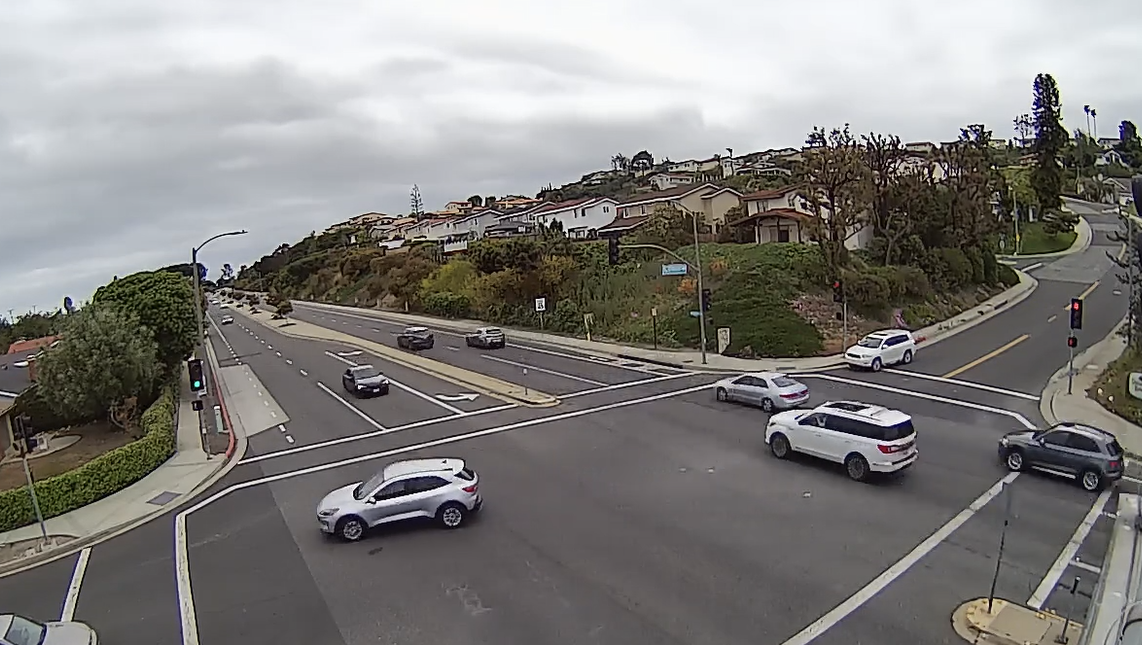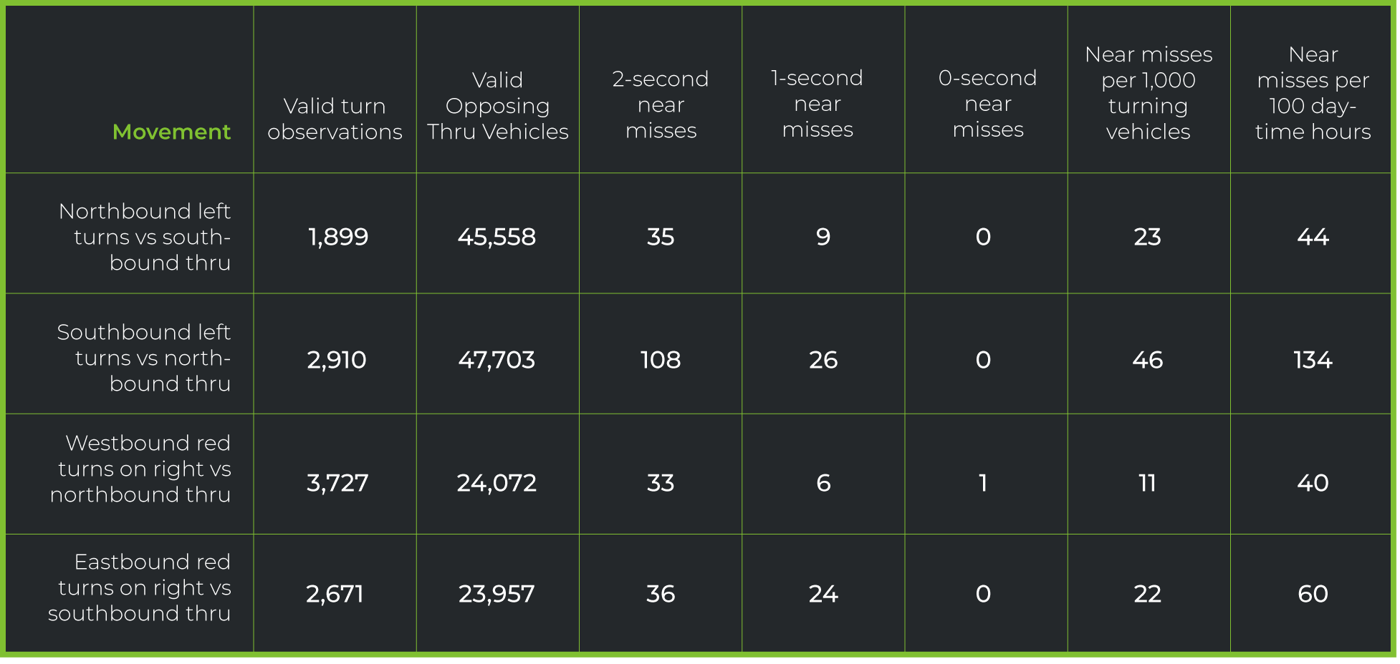Proactive Approach for Better Road Safety in the US: Near-Miss Analysis with GTS
In the intricate web of city management and transportation planning, prioritising projects becomes a crucial task. Municipalities diligently employ policies and criteria to allocate taxpayers’ money to essential transportation initiatives. But what happens when a potentially dangerous intersection narrowly escapes the criteria threshold?
One of our partners, GTS (General Technologies and Solutions), took a data-driven, proactive approach to traffic engineering to resolve this concern. Using video monitoring and the GoodVision traffic video analytics platform, it swiftly conducted a detailed and accurate near-miss analysis, developing actionable safety improvements for risky road sections. Curious how? Let's dive in.
Who is GTS?
GTS is a transportation planning, engineering, and technology company based in Los Angeles, and it was founded to link local governments with Silicon Valley firms to integrate new technologies into transportation. It provides mobility-oriented solutions such as traffic engineering, smart city technologies, multimodal transportation planning, and parking optimisation to clients worldwide. GTS benefits all road users: pedestrian, bicycle, transit, auto and freight modes, guided by three core missions of saving lives, time, and space through technology.
The challenge? Finding solutions to known hazards
The aforementioned hazardous road section is a signalised intersection of a well-travelled major arterial road and two local collector streets in the Los Angeles suburbs. With around 30,000 vehicles passing through daily, the intersection sees intense traffic.

View of the intersection from the installed traffic cameras.
Road users' main issue with the intersection was dangerous left turns, which were involved in most near misses. The city kept receiving requests for safety improvements, particularly a protected left turn signal. Unfortunately, the intersection didn’t meet the local criteria for implementing a protected left-turn signal phase, which is five or more collisions involving left turns during a recent 12-month period.
However, drivers were certainly right to think that left turns were particularly risky. In the past few years, the intersection just barely missed the required amount of left-turn collisions, with four in 2022 and three in 2021. Overall, between 2011 and 2022, 23 out of the 27 total collisions involved left turns.
A closer look at the intersection lets us better understand the possible causes of the problem. Besides connecting roads with different travel speeds, the intersection has slightly offset left-turn lanes. Additionally, sight distances are restricted on both minor street approaches for right turns on red.

Left-turn lanes and medians are offset, potentially leading to near-misses.
Balancing Act: Incremental Measures for Intersection Safety
Though lane misalignment may be one of the factors leading to some collisions, readjusting lanes most likely wouldn’t solve the problem on its own. Due to the complexity of the intersection, such an intervention would also be costly and affect traffic at the intersection for an extended time.
Installing a protected left-turn phase signal would be less disruptive but also more expensive as the whole signal system may need to be upgraded. It’s also a work- and time-intensive process requiring coordination with other transportation infrastructure.
In the face of other competing demands the city needed to address, an incremental approach was suggested. The city would start with smaller, easier-to-deploy, lower-cost actions and then work on long-term solutions if needed. Immediate interventions included:
- monitoring the intersection to identify near-misses better,
- equipping traffic lights with yellow reflective backplates to improve visibility,
- installing 45 mph (72 kph) pavement markings.
Long-term solutions would take 1-2 years to implement and could involve:
- realigning the left-turn lanes and offsetting concrete medians,
- installing a protected left-turn phase signal.
The answer to road safety is in the data
Monitoring the intersection for near-misses and providing statistical evidence for future interventions and transportation planning was a crucial step in the process. Here’s where GTS decided to leverage GoodVision video traffic analytics solutions.
The first action was installing cameras at a vantage point that allowed a view of all the intersection’s approaches and departures. The cameras collected 100 hours of footage, recording around 45,000 movements, then the footage was uploaded to GoodVision Video Insights. As a bonus, pedestrian movements were also captured for future projects.

GoodVision records tracks of each vehicle passing through defined points in the scene.
Despite its volume, this dataset was processed quickly using GoodVision’s AI algorithm. The output for the near-miss analysis was a spreadsheet with all-time gaps between vehicles coming from different movements specified by GTS. Then, the GTS team could easily filter the spreadsheet for the shortest time gap incidents, e.g. one second between vehicles moving at 45-50 mph (72-80 kph).
Since GoodVision relies on video recordings, analysts were also able to look up filtered incidents in the footage quickly. All they needed to do was go to the specific timestamp in the recording on our platform. With that, they could see and better understand exactly how the near-miss occurred.
The GTS team focused on four movements, including left turns and right turns on red, which road users had also reported as dangerous. As a result, GTS was able to quantify near-misses with different time gaps (2, 1, or below 1 second) for all analysed movements, presented in the table below.

Based on this analysis, GTS concluded that a near-miss at the intersection occurs approximately 3 times per hour during daytime hours. About 64% of these near-misses are associated with left turns, while the remaining 36% involve right turns on red.
Then, GTS analysts compared these statistics with wider research and generally accepted standards for perception-reaction time:
- A typical driver’s time to apply brakes is 1.5 seconds. Some drivers may be distracted or have slower reaction times.
- A car travelling at 45 mph (72 kph) needs 140 feet (40m) to stop.
- At 45 mph, a vehicle travels at 66 feet (20 metres) per second, and some vehicles passing through the arterial road travel at higher speeds.
Given the speeds of vehicles passing through the intersection and the average reaction times, a 1-second gap leaves drivers very little room for error.

One of the near-misses recorded at the scene. That was too close!
Boosting road safety through proactive interventions
Based on the near-miss analysis of the footage and statistical data, GTS confirmed that safety improvements are necessary. Additionally, the team came up with two recommended interventions for the intersection:
- A protected left-turn phase.
- The prohibition of right turns on red for the minor street approaches to the intersection.
With the near-miss analysis and recordings, GTS can advocate for a proactive approach and encourage city officials to work to prevent accidents rather than wait until the intersection meets the criteria. The data shows clearly that as things stand now, collisions are eventually bound to happen but can be prevented with adequate—and justified—improvements.
GoodVision for a better near-miss analysis
GoodVision played a pivotal role in the survey, helping GTS easily collect traffic data, visualise and filter large datasets and compare numerical records with traffic footage for extra context.
Large sample size
GTS needed to process a large sample size to receive valid results. Normally, the footage would be reviewed and searched for near-misses manually, but with 100 hours of recordings, that wouldn’t be feasible. Also, given a sample this big, human reviewers would most likely miss some events or make other errors. By offloading these manual traffic engineering tasks to AI, GTS saved time and resources and could deliver more accurate results in a shorter time.
Ease of use
The GTS team also appreciated the ease of use of the platform. Its intuitive interface allows new users to quickly find their way around the platform and jump right into analysis. There, they can define custom movements for the scene, filter it by specific parameters, and get specific traffic data.

Defining movements is as easy as drawing lines for the desired movements.
Visual analyses
Combining spreadsheet data with traffic footage enabled GTS to easily analyse each near-miss individually. Since finding specific event snapshots takes seconds, the team could also quickly verify the accuracy of the survey and find potential false positives. Lastly, the visual format makes showcasing the survey methodology and results easier for GTS clients.

Take a proactive approach with GoodVision
Some transportation improvements feel necessary, but there just isn’t enough hard evidence to back them up. The story of our collaboration with GTS shows that traffic video analytics can provide decision-makers with the numerical and visual proof needed to make a lasting change.
Want to write your own traffic analytics success story?
Team up with GoodVision and get more from your traffic data, faster.
Read more success stories of our clients
- Using tethered drones for traffic surveys in Singapore
- Real-Time Traffic Monitoring for Congestion Prevention
- Driver behaviour analysis in Spain with Vectio
- Transport planning in Warsaw with IDOM
- Mobility planning with A+S
- Traffic Surveys in the UK with A-T-R
- Automated traffic data collection with CzechConsul



